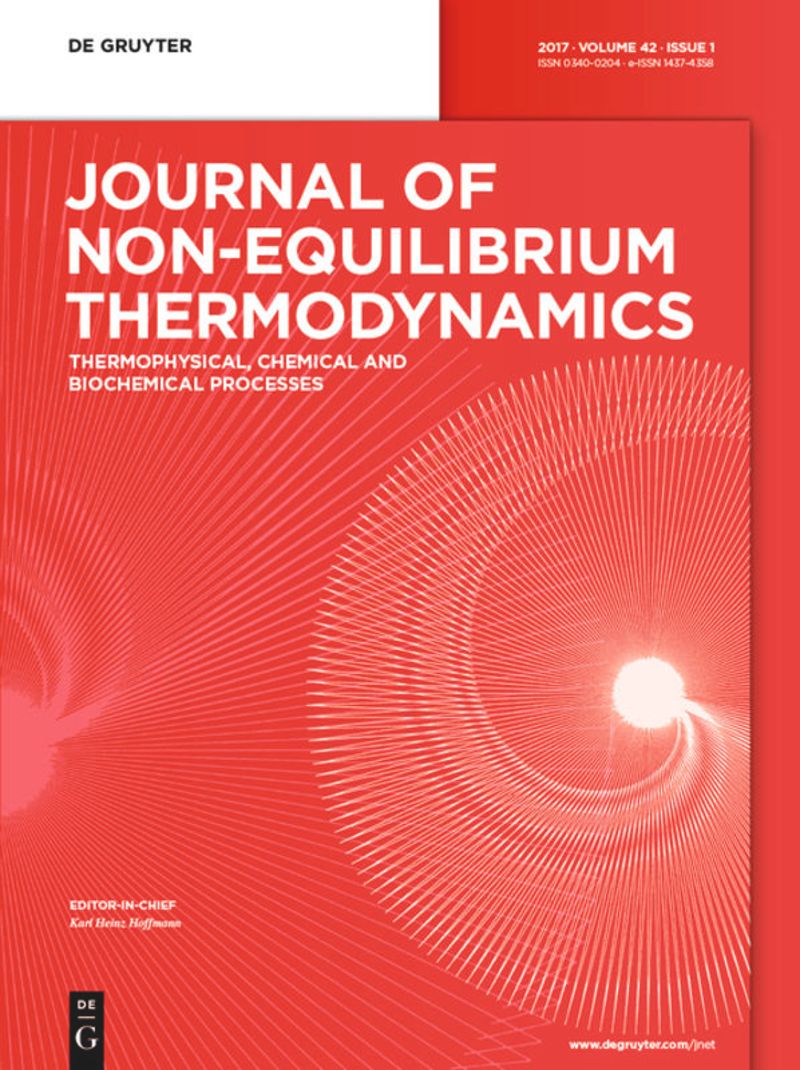所有的化学反应原则上都是可逆的吗?“概念完全”和“实际完全”反应之间的热力学区别
IF 4.2
3区 工程技术
Q1 MECHANICS
引用次数: 0
摘要
摘要在对产物形成具有显著热力学驱动力的化学反应中,必须区分达到化学平衡状态的过程和最终平衡状态对应于反应物真正完全消耗的过程,即在给定条件下实际上没有达到真正的化学平衡。基于几个选定的例子,提出了两个热力学论点,从不同的角度对上述区别进行了合理化:相位规则观点和吉布斯能量最小化方法。“概念上完全”的反应涉及纯相,因此,建立化学平衡意味着负变化,而完全消耗一个或多个相可以避免这种变化。在吉布斯能方法中,“概念上完全”的反应和“实际上完全”反应可以通过不同的方式来区分(在固定的温度和压力下),以获得最小吉布斯能条件,分别具有作为反应程度ξ函数的尖锐(不可微)和平坦(零导数)的极小点。本文章由计算机程序翻译,如有差异,请以英文原文为准。
Are all chemical reactions in principle reversible? Thermodynamic distinction between “conceptually complete” and “practically complete” reactions
Abstract Among the chemical reactions having a pronounced thermodynamic driving force to the formation of products, a distinction has to be made between processes which attain a chemical equilibrium state very much shifted towards the products and those where the final equilibrium state corresponds to the truly complete consumption of reactant(s), i.e. where a true chemical equilibrium is actually not attained under the given conditions. Based on a few selected examples, two thermodynamic arguments are led which rationalise the above distinction from different points of view: a phase-rule point of view and a Gibbs energy minimization approach. “Conceptually complete” reactions involve pure phases and, as a consequence, establishing chemical equilibrium would imply a negative variance, what is avoided by the complete consumption of one or more phases. In the Gibbs energy approach, “conceptually complete” reactions and “practically complete” ones can be distinguished (at fixed temperature and pressure) by the different way to attain the minimum Gibbs energy condition, respectively with sharp (not differentiable) and flat (zero derivative) minimum points as a function of the extent of reaction ξ.
求助全文
通过发布文献求助,成功后即可免费获取论文全文。
去求助
来源期刊
CiteScore
9.10
自引率
18.20%
发文量
31
审稿时长
1 months
期刊介绍:
The Journal of Non-Equilibrium Thermodynamics serves as an international publication organ for new ideas, insights and results on non-equilibrium phenomena in science, engineering and related natural systems. The central aim of the journal is to provide a bridge between science and engineering and to promote scientific exchange on a) newly observed non-equilibrium phenomena, b) analytic or numeric modeling for their interpretation, c) vanguard methods to describe non-equilibrium phenomena.
Contributions should – among others – present novel approaches to analyzing, modeling and optimizing processes of engineering relevance such as transport processes of mass, momentum and energy, separation of fluid phases, reproduction of living cells, or energy conversion. The journal is particularly interested in contributions which add to the basic understanding of non-equilibrium phenomena in science and engineering, with systems of interest ranging from the macro- to the nano-level.
The Journal of Non-Equilibrium Thermodynamics has recently expanded its scope to place new emphasis on theoretical and experimental investigations of non-equilibrium phenomena in thermophysical, chemical, biochemical and abstract model systems of engineering relevance. We are therefore pleased to invite submissions which present newly observed non-equilibrium phenomena, analytic or fuzzy models for their interpretation, or new methods for their description.

 求助内容:
求助内容: 应助结果提醒方式:
应助结果提醒方式:


